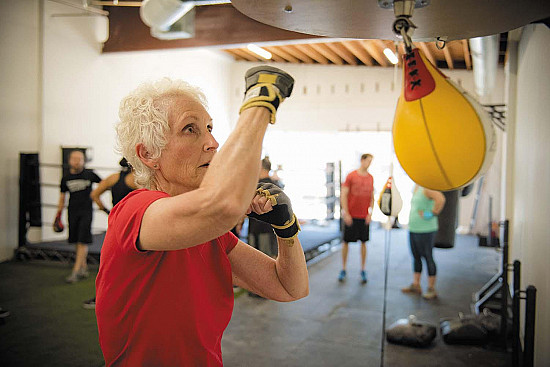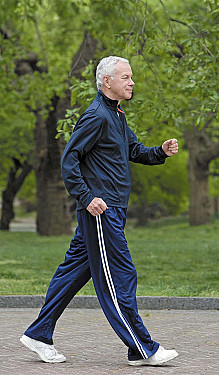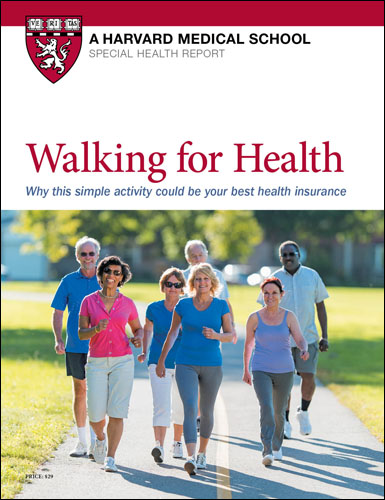Walking advice from a master walker
A champion master-level racewalker shares tips on how to step up your walking routine.
- Reviewed by Howard E. LeWine, MD, Chief Medical Editor, Harvard Health Publishing; Editorial Advisory Board Member, Harvard Health Publishing

Dr. Alan Poisner, 88, was a latecomer to the world of competitive walking. He took up racewalking at age 50, and over the past 38 years has become one of the country's most decorated master-level walkers. He has won five gold medals representing the United States in international competitions and has competed in 14 National Senior Games, where he holds several records. A medical researcher, Dr. Poisner also has a long career exploring the physiology of walking, especially among older adults.
It's safe to say, Dr. Poisner walks the walk. So, we asked him to share his advice and wisdom about walking for health and fitness — from beginning a routine, to staying motivated, to elevating your workouts. Here are his suggestions.
Choose a time. Like other new health habits, it's best to set aside a specific time and day(s) of the week to walk for fun or fitness. "Some prefer mornings to free up later hours, but I enjoy the afternoon, when my body has been warmed up by usual routine activities. Whatever you choose, you do not need to be obsessive. Make it part of your daily activity. You'll be surprised how much you miss walking if you have to skip a regular session."
Vary your settings. Dr. Poisner likes different locations depending on his workout goal. "For pleasure walks, I enjoy non-urban trail-like settings to experience new areas. For structured workouts, I often use a treadmill or an indoor or outdoor track that helps me better measure distance and pace."
Shake it up. Walks measured by time (20 to 30 minutes) or distance (1 to 2 miles) are ideal for most beginners, but you can eventually add structured workouts. Two of Dr. Poisner's favorite workouts are intervals and ladders.
For intervals, you first walk at a comfortable pace. Then, for a short period (for example, 30 seconds to two minutes) walk at a faster pace, where your breathing is a bit labored but you can still talk. Then slow to a comfortable pace to let your heart rate recover. Repeat the pattern of fast pace and recovery for 10 to 15 minutes.
For ladders, you begin walking at an easily maintained pace for a few minutes. Then, gradually increase the pace every one to two minutes until you reach a pace that is difficult to maintain. You then gradually slow the pace back to your starting speed. "This is most easily done on a treadmill, but it can also be done outside by monitoring your pace with a fitness watch or your breathing." (You can find more sample workouts for all levels at www.racewalking.org and www.racewalk.com.)
Hydrate. Approach walking as any other cardio activity, and take in enough fluid. "I hydrate before and after walking. If the walk is an hour or more, I carry a water bottle and drink regularly."
Take it slow. When beginning a walking program, don't be in a rush to increase speed or distance, which can lead to injury. "Focus on weekly, incremental increases in duration and intensity."
Join a group. There is often strength in numbers. "Walk on your own, but try to enlist some companions or join a local walking club to make it easier to maintain the discipline of daily walking."
Sign up for a race. "I entered many road races with no competitive walking division over the years. I did it just for the camaraderie, the chance to exercise, and often to support a charitable cause." To begin, look for races offering 5K (3.1 miles) or 1-mile "fun run" categories.
Get swinging. Walking can be a full-body workout if you engage your arms while you walk. "I focus on swinging my arms in a natural form so that the motion and location of my arms is the most efficient."
Have fun. "I tell new walkers that there are two rules: don't hurt yourself, and have fun. If walkers follow these rules, they will enjoy this activity for many years."
Image: © Nastasic/Getty Images
About the Author

Matthew Solan, Executive Editor, Harvard Men's Health Watch
About the Reviewer

Howard E. LeWine, MD, Chief Medical Editor, Harvard Health Publishing; Editorial Advisory Board Member, Harvard Health Publishing
Disclaimer:
As a service to our readers, Harvard Health Publishing provides access to our library of archived content. Please note the date of last review or update on all articles.
No content on this site, regardless of date, should ever be used as a substitute for direct medical advice from your doctor or other qualified clinician.
















